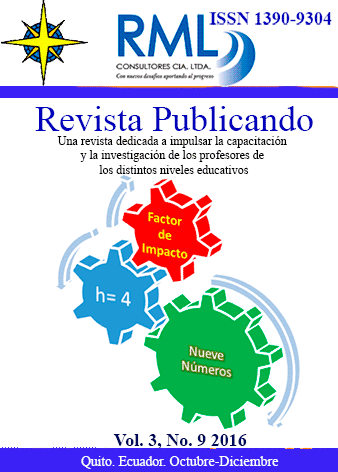Resumen
La evasión fiscal que surge de la interacción repetida de tres tipos de contribuyentes: los tramposos, ciudadanos honrados y facultativos. Al suponer que la evolución cultural es impulsada sólo por los beneficios materiales.
Existen dos formas de evasión tributaria: la evasión legal y la evasión ilegal. Sin embargo, no toda acción tomada para reducir el pago de impuestos constituye evasión. La evasión es un fenómeno social que tiene lugar en todas las actividades económicas y está relacionada con la equidad, la transparencia, la eficiencia, la legalidad del gasto público y con el empleo (absorción de la fuerza laboral).
El objetivo de este trabajo es mostrar la evasión fiscal en el contexto social contemporáneo. Para ello se desarrolla una búsqueda bibliográfica, empleando la plataforma científico académica Scincedirect.
Los resultados de nuestro análisis revelan que la presencia de contribuyentes que actúan con honestidad en primer lugar y están dispuestos a sancionar costosos desempeña un papel importante para el éxito a largo plazo de la batalla social contra la evasión de impuestos.
Referencias
Ahamed, M. M. (2016). Does inclusive financial development matter for firms”™ tax evasion? Evidence from developing countries. Economics Letters, 149, 15-19. doi:http://dx.doi.org/10.1016/j.econlet.2016.10.003
Alm, J., McClelland, G. H., & Schulze, W. D. (1992). Why do people pay taxes? Journal of Public Economics, 48(1), 21-38. doi:http://dx.doi.org/10.1016/0047-2727(92)90040-M
Allingham, M. G., & Sandmo, A. (1972). Income tax evasion: a theoretical analysis. Journal of Public Economics, 1(3), 323-338. doi:http://dx.doi.org/10.1016/0047-2727(72)90010-2
Anderson, C. M., & Putterman, L. (2006). Do non-strategic sanctions obey the law of demand? The demand for punishment in the voluntary contribution mechanism. Games and Economic Behavior, 54(1), 1-24. doi:http://dx.doi.org/10.1016/j.geb.2004.08.007
Antoci, A., Russu, P., & Zarri, L. (2014). Tax evasion in a behaviorally heterogeneous society: An evolutionary analysis. Economic Modelling, 42, 106-115. doi:http://dx.doi.org/10.1016/j.econmod.2014.06.002
Balafoutas, L., Beck, A., Kerschbamer, R., & Sutter, M. (2015). The hidden costs of tax evasion.: Collaborative tax evasion in markets for expert services. Journal of Public Economics, 129, 14-25. doi:http://dx.doi.org/10.1016/j.jpubeco.2015.06.003
Berger, M., Fellner-Rí¶hling, G., Sausgruber, R., & Traxler, C. (2016). Higher taxes, more evasion? Evidence from border differentials in TV license fees. Journal of Public Economics, 135, 74-86. doi:http://dx.doi.org/10.1016/j.jpubeco.2016.01.007
Bernasconi, M., Levaggi, R., & Menoncin, F. (2015). Tax evasion and uncertainty in a dynamic context. Economics Letters, 126, 171-175. doi:http://dx.doi.org/10.1016/j.econlet.2014.12.013
Bertotti, M. L., & Modanese, G. (2014). Micro to macro models for income distribution in the absence and in the presence of tax evasion. Applied Mathematics and Computation, 244, 836-846. doi:http://dx.doi.org/10.1016/j.amc.2014.07.055
Cadsby, C. B., & Maynes, E. (1999). Voluntary provision of threshold public goods with continuous contributions: experimental evidence. Journal of Public Economics, 71(1), 53-73. doi:http://dx.doi.org/10.1016/S0047-2727(98)00049-8
Carpenter, J. P. (2007). The demand for punishment. Journal of Economic Behavior & Organization, 62(4), 522-542. doi:http://dx.doi.org/10.1016/j.jebo.2005.05.004
Dharmapala, D. (2016). Cross-border tax evasion under a unilateral FATCA regime. Journal of Public Economics, 141, 29-37. doi:http://dx.doi.org/10.1016/j.jpubeco.2016.07.006
Gokalp, O. N., Lee, S.-H., & Peng, M. W. (2017). Competition and corporate tax evasion: An institution-based view. Journal of World Business, 52(2), 258-269. doi:http://dx.doi.org/10.1016/j.jwb.2016.12.006
Hokamp, S. (2014). Dynamics of tax evasion with back auditing, social norm updating, and public goods provision – An agent-based simulation. Journal of Economic Psychology, 40, 187-199. doi:http://dx.doi.org/10.1016/j.joep.2013.01.006
Korndí¶rfer, M., Krumpal, I., & Schmukle, S. C. (2014). Measuring and explaining tax evasion: Improving self-reports using the crosswise model. Journal of Economic Psychology, 45, 18-32. doi:http://dx.doi.org/10.1016/j.joep.2014.08.001
Kuchumova, Y. (2017). The Optimal Deterrence of Tax Evasion: The Trade-off Between Information Reporting and Audits. Journal of Public Economics, 145, 162-180. doi:http://dx.doi.org/10.1016/j.jpubeco.2016.11.007
Levaggi, R., & Menoncin, F. (2016). Optimal dynamic tax evasion: A portfolio approach. Journal of Economic Behavior & Organization, 124, 115-129. doi:http://dx.doi.org/10.1016/j.jebo.2015.09.003
Litina, A., & Palivos, T. (2016). Corruption, tax evasion and social values. Journal of Economic Behavior & Organization, 124, 164-177. doi:http://dx.doi.org/10.1016/j.jebo.2015.09.017
Liu, X., Shi, H., & Ferrantino, M. (2016). Tax evasion through trade intermediation: Evidence from Chinese exporters. International Review of Economics & Finance, 42, 518-535. doi:http://dx.doi.org/10.1016/j.iref.2015.10.022
Paetzold, J., & Winner, H. (2016). Taking the high road? Compliance with commuter tax allowances and the role of evasion spillovers. Journal of Public Economics, 143, 1-14. doi:http://dx.doi.org/10.1016/j.jpubeco.2016.08.001
Pickhardt, M., & Seibold, G. (2014). Income tax evasion dynamics: Evidence from an agent-based econophysics model. Journal of Economic Psychology, 40, 147-160. doi:http://dx.doi.org/10.1016/j.joep.2013.01.011
Seibold, G., & Pickhardt, M. (2013). Lapse of time effects on tax evasion in an agent-based econophysics model. Physica A: Statistical Mechanics and its Applications, 392(9), 2079-2087. doi:http://dx.doi.org/10.1016/j.physa.2013.01.016
Tenidou, E., Valsamidis, S., Petasakis, I., & Mandilas, A. (2015). Elenxis, an Effective Tool for the War Against Tax Avoidance and Evasion. Procedia Economics and Finance, 33, 303-312. doi:http://dx.doi.org/10.1016/S2212-5671(15)01714-1
Usted es libre de:
Compartir — copiar y redistribuir el material en cualquier medio o formato
Adaptar — remezclar, transformar y construir a partir del material
La licenciante no puede revocar estas libertades en tanto usted siga los términos de la licencia
Bajo los siguientes términos:
Atribución — Usted debe dar crédito de manera adecuada, brindar un enlace a la licencia, e indicar si se han realizado cambios. Puede hacerlo en cualquier forma razonable, pero no de forma tal que sugiera que usted o su uso tienen el apoyo de la licenciante.
NoComercial — Usted no puede hacer uso del material con propósitos comerciales.
CompartirIgual — Si remezcla, transforma o crea a partir del material, debe distribuir su contribución bajo la lamisma licencia del original.
